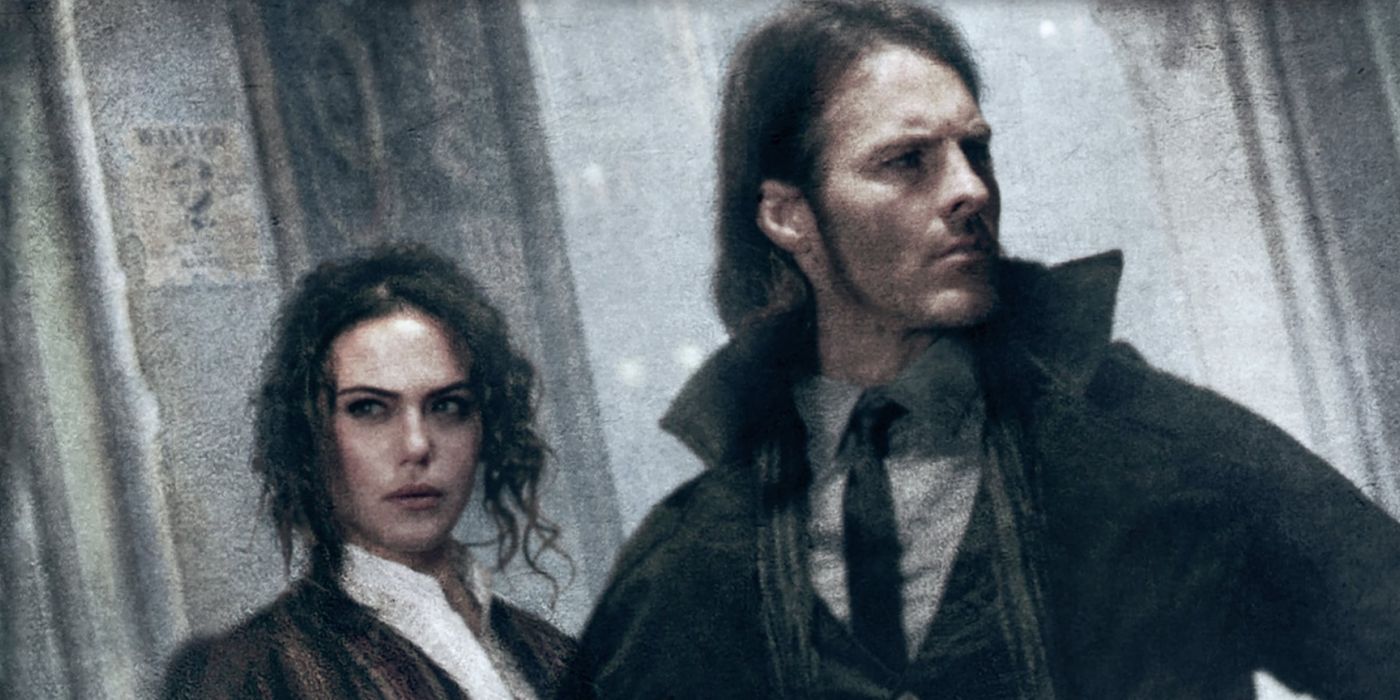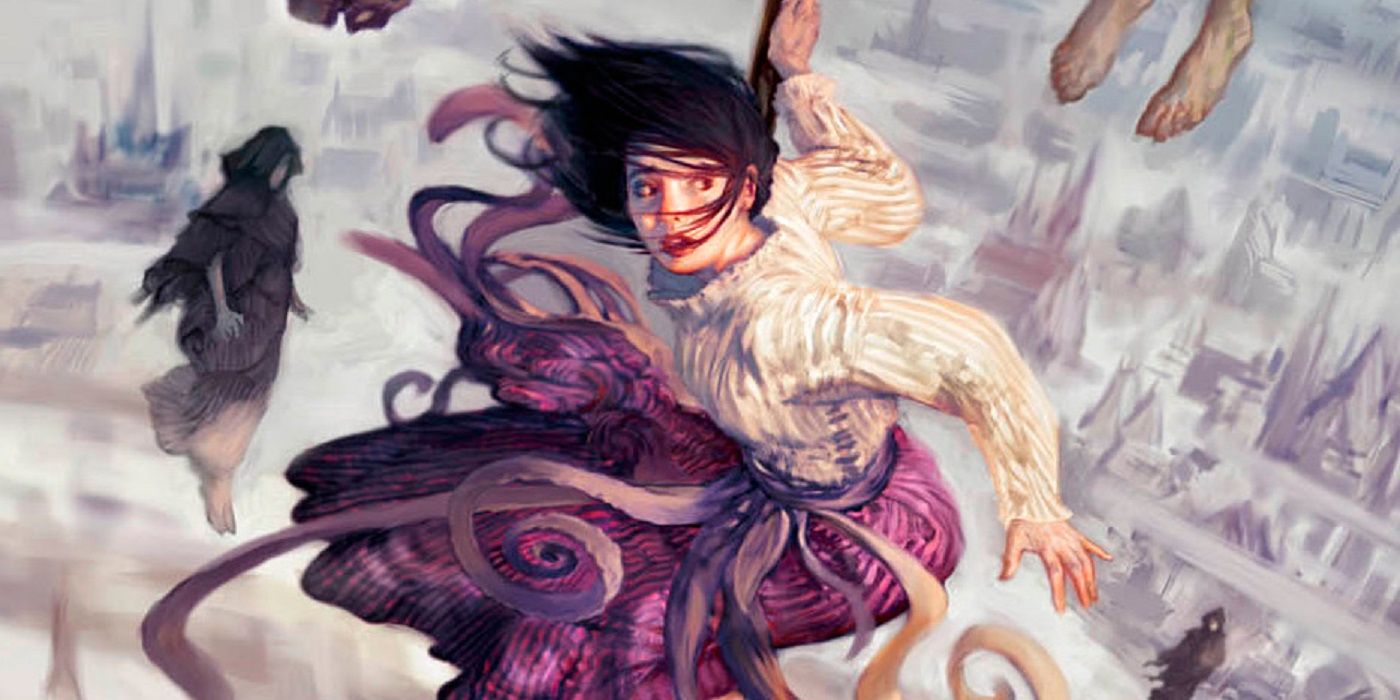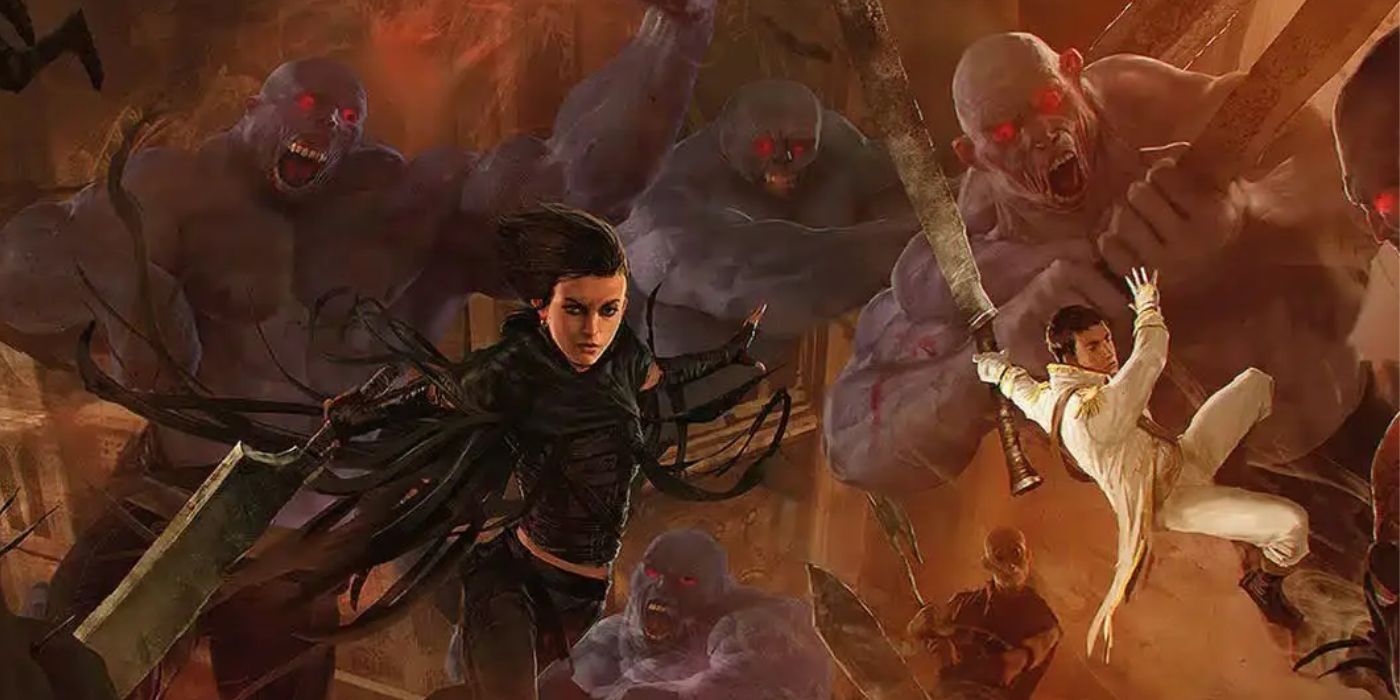Every Creature In The Mistborn Books, Explained
Includes SPOILERS for the Mistborn book series.
Summary
- Mistborn series introduces unique species like Steel Inquisitors, Kandra, Mistwraiths, and Koloss, adding depth to Scadrial’s world.
- Creatures like Steel Inquisitors and Koloss are tied to Hemalurgy magic system, serving significant roles in the narrative propelling the story.
- Mistwraiths, related to Kandra, exist mainly in folklore while Koloss, massive humanoid creatures, are utilized in armies in the Mistborn series.
Brandon Sanderson’s Mistborn book saga is filled with unique species, each of which adds vital elements to Scadrial’s world and narrative. Many of the most imaginative fantasy worlds in literature have been praised for their unique contributions to the genre’s mythology, creating original creatures with specific purposes. J.R.R. Tolkien had hobbits, George R.R. Martin created White Walkers, and Joe Abercrombie polished his First Law series with Shanka. Each of these contributes immense value to their respective worlds, complementing their tones and aesthetics. Brandon Sanderson’s Cosmere universe is packed with fascinating world-building, and some of the best is in Mistborn.
The Mistborn series is the perfect introduction to Brandon Sanderson’s fantasy stories. Start with 2006’s The Final Empire.
The Mistborn series currently consists of seven novels, divided into two eras. The first three books consist of Era 1, and the subsequent four consist of Era 2, occurring 300 years later in Scadrial’s chronology. Brandon Sanderson’s next major book release is The Stormlight Archive 5, though afterward, he’ll begin working on the next Mistborn books, pushing the world further along on its timeline. All the creatures in Sanderson’s world were introduced in Era 1 as non-human species have begun to fade into mythology as technology advances.
Creatures and magic in Mistborn and the broader cosmere are all tied to the same source of energy. The gods in Mistborn, referred to as Shards, are all components of Adonalsium, the cosmere’s creator and primary power source. The sixteen Shards use their various abilities to create magic systems as manifestations of that power, and each creature in Mistborn is tied to one of those systems. Each creature and its origins have crucial meaning to the story, especially since Sanderson’s fictional worlds are distinct in their ecosystem and inhabitants.
4 Steel Inquisitor
Steel Inquisitors Are Hemalurgic Creatures Primarily Used As Enforcers For The Lord Ruler
Steel Inquisitors are the first creatures introduced in The Final Empire and serve as some of the main antagonists for the original Mistborn trilogy. In appearance, they resemble humans, though their eyes are pierced through with metal spikes. They also have several other spikes pierced throughout their body, with that quantity tied to their power and strength. Inquisitors are a construct of the Hemalurgy magic system, which utilizes the aforementioned spikes to distribute power.
the Steel Inquisitors served as the primary enforcers for the Steel Ministry
Under the Lord Ruler, the Steel Inquisitors served as the primary enforcers for the Steel Ministry, tasked with monitoring Allomancers. They served as higher ranks than standard obligators, who all worked to manage the bureaucracy of Luthadel’s society and contributed to maintaining the belief that the Lord Ruler’s reign was divine. Under Ruin, the Inquisitors were given extra spikes and powers, continuing to use them in his war against Vin, Elend, and Scadrial.
As depicted in The Final Empire through Marsh’s death, Steel Inquisitors are made through the sacrifice of human Mistings and Feruchemists. This process typically happens to obligators; hence Marsh becoming one to infiltrate the Steel Ministry. Their hearts are pierced with a spike to begin the painful transformation; then, vital spikes are placed through the eyes, and a central “linchpin” spike is used to connect the upper and lower spikes. Inquisitors are particularly strong, but Kelsier kills one in the first book through a beheading, and removing the linchpin can also kill them.
The primary Steel Inquisitor in the series is Marsh, who, through his excess Hemalurgic spikes, is one of the most powerful Mistborn characters. Despite being converted to an Inquisitor and losing much of his autonomy, he plays a vital role in bringing down Ruin with the humanity he retains. In Era 2, he’s still alive and referred to as Ironeyes, considered the embodiment of death in the world’s mythology.
3 Kandra
Kandra Are Shape-Shifting Creatures Primarily Used For Espionage
Kandra are another massively impactful creature in the Mistborn saga, with their transformation abilities used as major narrative elements in The Well of Ascension and Shadows of Self. Shapeshifting creatures are common in fantasy and sci-fi, but the kandra species are made unique through their distinct culture. During the Lord Ruler’s reign, kandra are enslaved and fulfill contracts to keep them safe, using their abilities for espionage purposes among nobles in Luthadel.
Shapeshifting creatures are common in fantasy and sci-fi, but the kandra species are made unique through their distinct culture.
Kandra are first introduced in The Final Empire, as Kelsier has hired one to imitate the nobleman Lord Renoux while Vin impersonates his daughter. After Kelsier, Oreseur’s contract is passed to Vin, who develops a relationship with the kandra. In The Well of Ascension, OreSeur turns out to actually be a kandra known as TenSoon, who breaks his contract out of respect for her, leading to him being put on trial in The Hero of Ages. In Era 2, the kandra MeLaan is an ally to Wax, and the kandra Paalm is the primary antagonist of Shadows of Self.
Due to the oppression of the Lord Ruler’s society, kandra have a severe hatred for humans, despite using their bodies as vessels. Kandra transform by digesting a dead being, taking on its appearance by using their bones to reshape their bodies. This is primarily done to human characters, though Vin has OreSeur take the form of a wolfhound, as she distrusts him at the start. It turns out to be an advantage for them in both combat and spying, and he maintains the appearance in Era 2, long after she’s gone.
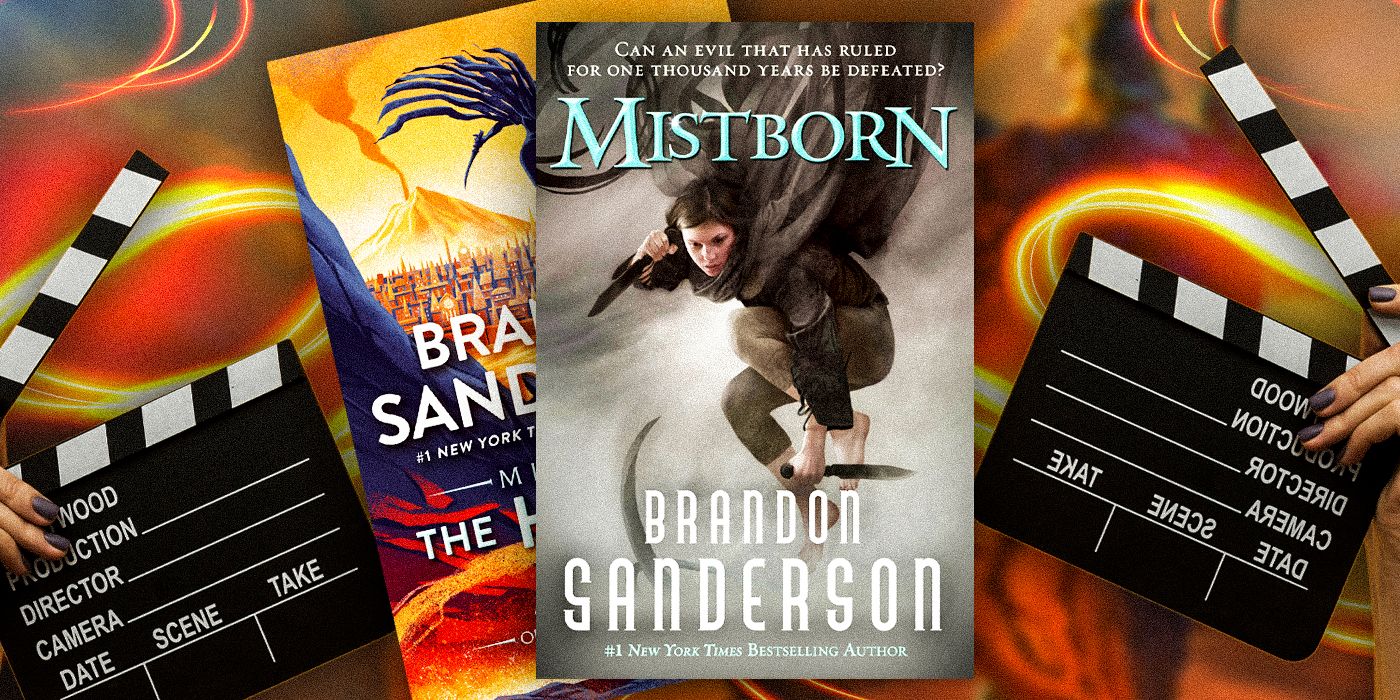
Forget Mistborn, This Even Bigger Book Series Is The Fantasy Adaptation I Really Need
A Mistborn movie sounds really exciting, but there’s another, even bigger fantasy series that we’d really love to see adapted by Hollywood.
Unlike the Inquisitors, who are constructs of Ruin, the kandra believe themselves to be of Preservation, despite Hemalurgy being part of the process of their creation. The Lord Ruler used Hemalurgic spikes, initially on the Terris packmen he knew prior to his ascension. Afterward, kandra were able to reproduce themselves through Hemalurgic spikes provided by The Lord Ruler, which they’d use to convert mistwraiths into more of themselves. He’d only provide a certain number of spikes per century, hence the distinct generations in kandra culture.
The Lost Metal reveals that Harmony has sent kandra to other planets.
Kandra are immortal, allowing them to survive into Mistborn Era 2. In the absence of The Lord Ruler and the previous Luthadel culture they served contracts in, kandra worked in Era 2 as agents for Harmony. Given the conflict in Era 2 and the increased connectivity to the rest of the Cosmere, The Lost Metal reveals that Harmony has sent kandra to other planets. One has apparently appeared in The Stormlight Archive book Oathbringer, though it’s unclear who it is.
2 Mistwraith
Mistwraiths Are Related To Kandra, But Mainly Exist In Folklore
One of the more ominous creatures in Mistborn, the mistwraiths are first introduced in The Final Empire when Kelsier shows one to Vin. Their species is directly tied to kandra, though they don’t have human sentience and instead wander at night, absorbing bones and other creatures. Like kandra, they were also once Feruchemists, but, according to Sanderson, “mistwraiths are people who have a blockage between the Physical and the Cognitive Realm, messing with their ability to think.” In physical form, they are quite similar.
Mistwraiths don’t play as pivotal a role as other creatures in the Mistborn series, as they primarily exist in the world of Scadrial as folklore. There are no mistwraiths in Era 2, and are treated as legend by the citizens of Elendel. The only significant development in Era 2 is that it’s revealed that kandra can be transformed back into mistwraiths by removing their spikes, and MeLaan describes mistwraiths as their “primal state.”
1 Koloss
Koloss Are Massive Humanoid Creatures Used In Armies In Mistborn
Koloss are one of the most fearsome creatures on Scadrial and some of the most terrifying in appearance in all of the Cosmere. They’re humanoid creatures, though they’re massive, have blue skin and red eyes, and their skin doesn’t adjust with their size, so larger koloss have peeled skin. They’re used primarily in the Mistborn series to wage war after being introduced in the multi-army conflict in The Well of Ascension. Nobleman Jastes Lekal is the first to integrate them into the clash of rulers, hoping to win himself the crown of Luthadel through koloss force.
Koloss are another creature created by the Lord Ruler through Hemalurgy and were used during the Final Empire as his military force. He controlled them through Allomancy, as emotional Allomantic abilities can be used to sooth or riot mass groups of them. In The Hero of Ages, Vin and Elend utilize this method to control koloss, and they play a crucial part in the conflict against Ruin.
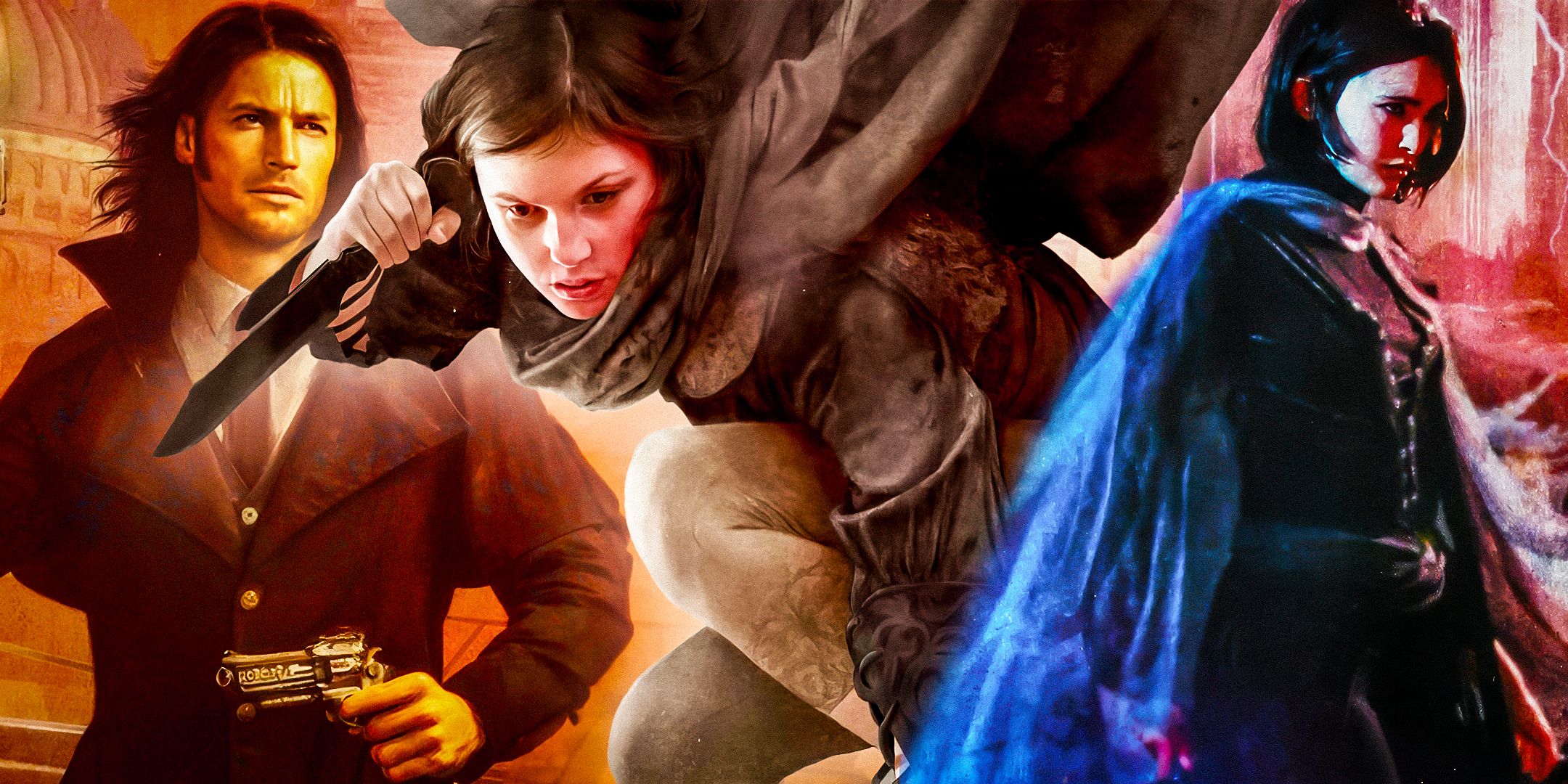
The Mistborn Movie Is The Perfect Replacement For This $9.5 Billion Fantasy Franchise
Mistborn’s best comparison for a movie aesthetic would be this $9.5 billion fantasy franchise, which has struggled over the past decade.
Koloss are created in a manner similar to that of Inquisitors, through human sacrifice with Hemalurgic spikes. Four people are stabbed through the heart with spikes; then those spikes are inserted into a fifth person who becomes the koloss. Like Inquisitors, the spikes in a Koloss give them their power, and they’re far stronger and more durable than humans. Despite previously being human, they aren’t as intelligent as people and don’t have adequate means of communicating with the humans controlling them.
In Mistborn Era 2, koloss live primarily in the Roughs, though they’ve been transformed by Harmony to be able to breed on their own. In The Alloy of Law, it’s revealed that koloss are able to become Allomancers. Compared to the other creatures in Era 2, the koloss are the only non-human species that still have a public society and culture, with kandra living privately. It will be fascinating to see how they, and the other Mistborn species, continue to exist with vastly improved technology in Era 3.

